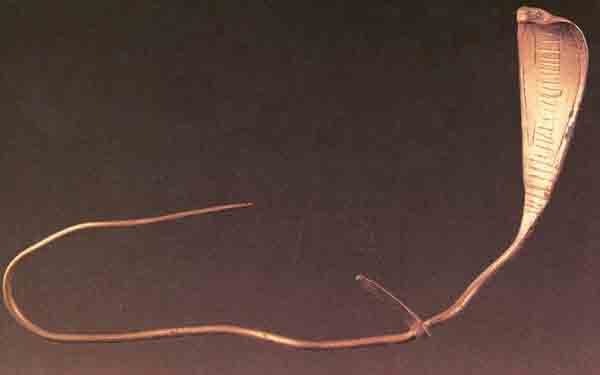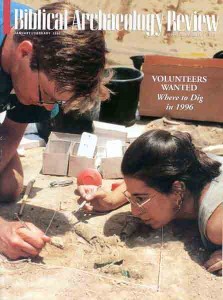Prize Find: Golden Cobra from Ekron’s Last Days

Excavating the Philistine capital city of Ekron (Tel Miqne) last summer, archaeologists discovered this solid-gold cobra on the floor of a monumental palace. Buried beneath a yard of debris from the Babylonian destruction of the city in 603 B.C.E., the serpent provides evidence of Ekron’s resplendent last days.
Measuring 8 inches (20.7 centimeters) from its raised head to the tip of its curled tail, the snake is fashioned of more-than-18-carat gold and weighs about half an ounce (12.64 grams). The figurine depicts the venomous snake, indigenous to Africa and Asia, prepared to attack, with the loose folds of skin around its neck expanded to create a hood. A prong (below the hood) originally attached the serpent to the headdress or wig of a statuette depicting an Egyptian royal figure or divinity, as seen in numerous representations of rulers of Egypt. In this position, the cobra (called the uraeus, after the Greek ouraios, which in turn derives from the Egyptian for cobra, Iaret, literally “she who rears up”) protected the bearer and demonstrated his or her authority.
Already a library member? Log in here.
Institution user? Log in with your IP address.

